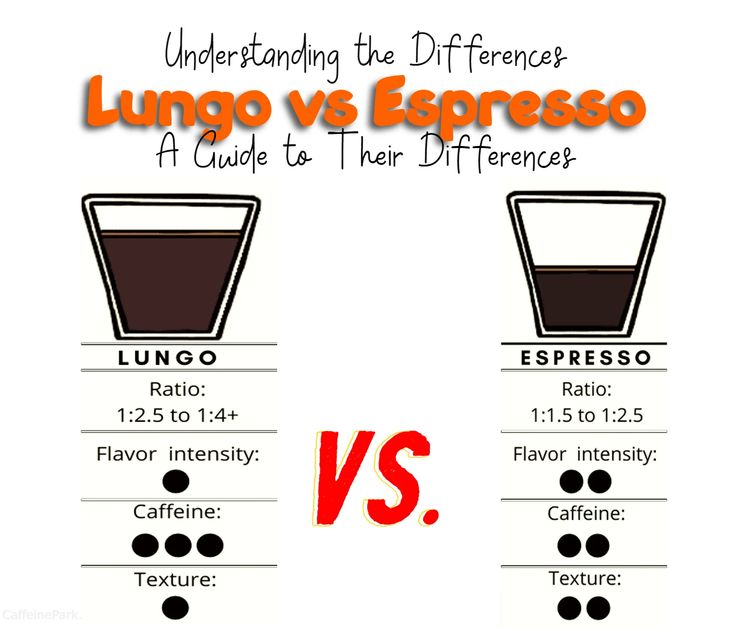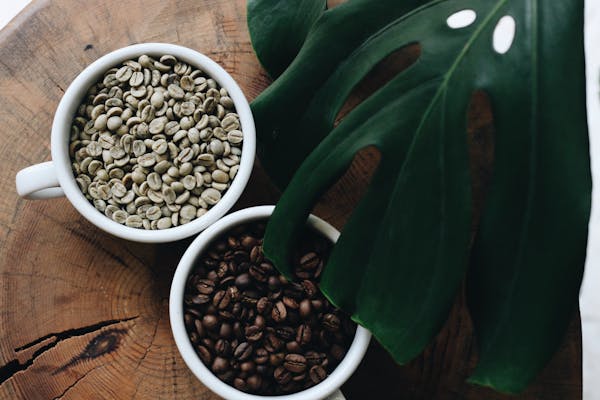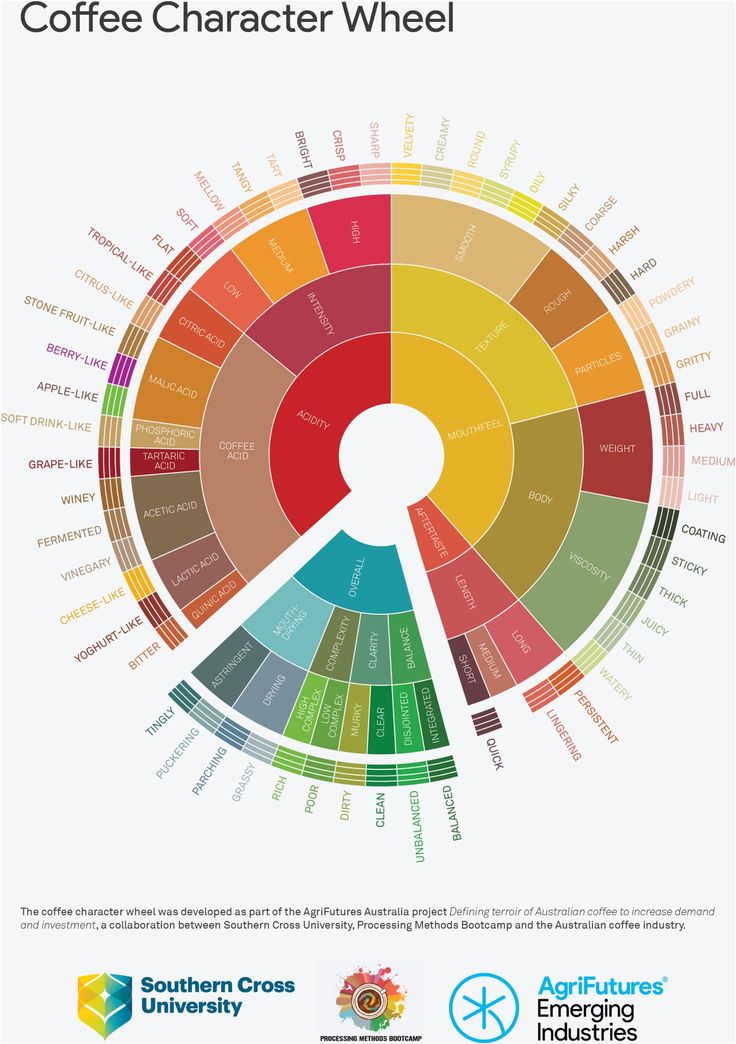☕️ The Craft and Science of Espresso: From Bean to Cup
Introduction 🌱🔬
The journey from a humble coffee cherry to the complex and satisfying experience of an espresso-based beverage is intricate. It involves numerous stages where quality can be enhanced or diminished. Achieving a specific, desired taste profile is not accidental; it requires a deep understanding and deliberate control of variables throughout the entire process. This includes:
- The selection of the coffee bean itself.
- The processing method used after harvest.
- The precise application of heat during roasting 🔥.
- The meticulous techniques employed during brewing.
- The nuanced interpretation of the resulting sensory experience (aroma 👃 and taste 👅).
This report provides a comprehensive overview of the key concepts influencing the quality and character of espresso and related beverages. Drawing upon current industry knowledge and scientific understanding, it explores:
- The spectrum of espresso shots.
- The profound impact of bean characteristics (shaped by processing and roasting).
- Critical espresso preparation techniques like distribution and tamping.
- The art and science of milk steaming 🥛 for texture and sweetness.
- The fascinating interplay between aroma and taste perception.
By examining each stage, we can build a clearer picture of how to consistently craft exceptional coffee.
Section 1: Understanding Espresso Shots 📊

Espresso is not a single entity but a spectrum of preparations, primarily differentiated by the brew ratio: the ratio of ground coffee used to the liquid espresso yielded. This fundamental parameter dictates the concentration, extraction dynamics, and ultimately, the flavor profile.
1.1 The Single Shot Spectrum: Ristretto, Normale, Lungo
These Italian terms describe variations based on the yield (length) relative to the coffee dose.
-
Ristretto (“Restricted”)
- Description: Shortest, most concentrated form.
- Brew Ratio: Typically 1:1 to 1:1.5 (e.g., 18g coffee → 18-27g espresso).
- Technique: Requires a finer grind than standard espresso to achieve the low yield within the optimal 25-30 second extraction time. Simply stopping a normal shot early leads to under-extraction (sourness).
- Flavor Profile: Intense, concentrated, rich, syrupy body. Emphasizes sweetness and acidity, minimizing bitterness (which extracts later).
- Caffeine: Generally less than a lungo due to lower yield.
-
Espresso (“Normale” / Standard)
- Description: The standard, balanced shot.
- Brew Ratio: Most common is 1:2 (e.g., 18g coffee → 36g espresso), typical range 1:1.5 to 1:2.5.
- Technique: Uses a standard espresso grind, targeting the yield in 25-30 seconds.
- Flavor Profile: Benchmark for balance – integrates acidity, sweetness, and bitterness. Moderate body.
- Caffeine: Medium.
-
Lungo (“Long”)
- Description: Longer, more diluted shot.
- Brew Ratio: Commonly 1:3 to 1:4, or even higher (e.g., 18g coffee → 45-72g+ espresso).
- Technique: Requires a coarser grind than standard espresso to achieve the higher yield within a reasonable time (often still aiming for 25-30 seconds). Simply letting a standard grind run long risks over-extraction (bitterness).
- Flavor Profile: Thinner body, less intensity. Bitterness is more prominent due to extracting later-dissolving compounds. Can taste watery or overly bitter if not prepared carefully.
- Caffeine: Generally more than a ristretto due to larger volume.
Why Adjust Grind? Adjusting grind size (finer for ristretto, coarser for lungo) allows baristas to hit the target brew ratio within the optimal 25-30 second extraction window. This prioritizes achieving the desired concentration without sacrificing the fundamental balance of flavor achieved in that time frame, avoiding the sourness of under-extraction or the excessive bitterness of over-extraction that results from simply altering time with a standard grind.
Table 1: Espresso Shot Comparison
| Feature | Ristretto (“Restricted”) | Espresso (“Normale”) | Lungo (“Long”) |
| Typical Ratio | 1:1 – 1:1.5 | 1:1.5 – 1:2.5 (Often 1:2) | 1:2.5 – 1:4+ |
| Extraction Goal | Finer grind, target yield in ~25-30s | Standard grind, target yield in ~25-30s | Coarser grind, target yield in ~25-30s |
| Flavor Profile | Concentrated, syrupy, emphasizes acidity & sweetness | Balanced acidity, sweetness & bitterness, moderate body | Thinner body, less concentrated, emphasizes bitterness |
| Dominant Sensation | Intensity, Sweetness/Acidity | Balance | Bitterness, Roastiness |
| Relative Caffeine | Lower | Medium | Higher |
 | |||
 |
1.2 The Double Shot: Defining the Modern Standard ⚖️
The term “double shot” has evolved:
- Historically (Volumetric):
- Single (Solo): ~7g coffee → ~30ml (1 fl oz) espresso.
- Double (Doppio): ~14g coffee → ~60ml (2 fl oz) espresso.
- Modern Specialty Coffee (Weight-Based):
- Focus shifted from volume (ml) to mass (grams) for precision, as crema volume varies. A 60ml shot might only weigh 30-40g.
- “Double shot” now primarily refers to the input dose (14-20g, commonly 16-18g) fitting a standard double portafilter basket. Single baskets (7-10g) are less common.
- The output yield is flexible and determined by the desired brew ratio applied to that dose (e.g., 18g in could yield 30g, 36g, or 50g espresso depending on the target ratio – Ristretto, Normale, or Lungo style).
- Sometimes, a standard double shot (e.g., 18g in → 36g out) pulled through a split portafilter into two cups might result in each ~18g serving being called a “single.”
Key Takeaway: In modern coffee, “double shot” indicates the input dose size, not a fixed output volume or weight. The actual yield depends on the brew ratio chosen for optimal taste.
Section 2: The Influence of the Bean 🌍
Great espresso starts long before brewing. Bean characteristics (species, origin, processing, roast) establish the flavor potential.
2.1 From Cherry to Green Bean: Processing Methods 🍒➡️🟢
Processing separates the bean (seed) from the fruit (cherry) and dries it. The method profoundly impacts flavor.
-
Washed Process
- Method: Skin/pulp mechanically removed → mucilage removed via fermentation in water tanks (12-48h) → beans washed clean → dried.
- Goal: Emphasizes the bean’s intrinsic qualities (genetics, terroir) by removing fruit influence early.
- Flavor Profile: “Clean,” “bright,” “clear.” Pronounced acidity, lighter body. Sweetness from bean’s development. Can sometimes be astringent in espresso if not perfectly extracted. Requires careful fermentation control.
-
Natural (Dry) Process
- Method: Oldest method. Whole cherry dried intact (skin, pulp, mucilage remain) on patios/beds for weeks → dried husk mechanically removed (hulling). Requires careful turning to prevent mold/unevenness.
- Goal: Allows interaction between bean and drying fruit. Sugars and compounds migrate into the bean.
- Flavor Profile: Heavier body, lower/rounded acidity, pronounced sweetness. Intense fruity/floral notes (“jammy,” “winey,” “berry,” “funky”). Higher risk of inconsistency or defects if not done well. Often favored for espresso due to sweetness and body.
-
Honey Process (Pulped Natural)
- Method: A hybrid. Skin removed (like washed), but some/all mucilage left on during drying. Amount retained (“yellow,” “red,” “black” honey) influences profile.
- Flavor Profile: Bridges washed and natural. Enhanced sweetness (honey-like), rounded acidity, more body/complexity than washed, more clarity than natural.
Why Processing Matters: It sets the bean’s chemical starting point. Naturals absorb fruit sugars, creating a base for fruit-forward flavors. Washed processes rely on compounds developed within the bean during growth, highlighting acidity/terroir. This different chemistry also affects how beans react during roasting (e.g., higher sugar naturals brown faster).
Table 2: Washed vs. Natural Processing Impact
| Feature | Washed Process | Natural (Dry) Process |
| Key Steps | Pulp removed → Fermentation → Washing → Drying bean | Drying whole cherry → Hulling dried fruit off bean |
| Acidity | Higher, brighter, sharper | Lower, more rounded |
| Sweetness | Cleaner, relies on bean’s inherent sugars | Higher, intense, fruity/jammy |
| Body | Lighter | Heavier, fuller |
| Flavor Clarity | High clarity, emphasizes origin, clean finish | Lower clarity (potentially), emphasizes fruit, complex, potentially “funky” |
2.2 The Art of Roasting: Medium vs. Dark 🔥

Roasting develops flavor/aroma via heat-driven chemical reactions (Maillard, caramelization). Roast degree is critical.
-
Medium Roast
- Process: Temp ~410-430°F (210-222°C). Ends after “first crack,” before “second crack.” Medium brown color, typically dry surface (maybe slight sheen).
- Flavor Profile: Balanced. Integrates origin characteristics with roast flavors. Moderate acidity, rounded body, noticeable sweetness (caramel, chocolate, nuts). Can retain some delicate floral/fruity origin notes. Versatile.
-
Dark Roast
- Process: Temp ~435-465°F (224-240°C) or higher. Continues into/beyond “second crack.” Deep brown to near-black, often oily surface (oils migrate out as cell structure breaks down).
- Flavor Profile: Dominated by roast process, masks origin. Low acidity, heavy body, pronounced bitterness. Notes: bold, smoky, roasty, carbon-like, dark chocolate, molasses. Can become ashy or burnt if over-roasted (a negative, indicating excessive carbonization). Historically used for espresso blends (body/intensity) or masking defects.
Roast as a Filter: Light roast = minimal filter, maximum origin character. Medium roast = balanced filter, mix of origin and roast notes. Dark roast = strong filter, origin masked by dominant roast flavors (bitterness, smokiness).
Table 3: Medium vs. Dark Roast Comparison
| Feature | Medium Roast | Dark Roast |
| Visuals | Medium brown, typically dry surface | Dark brown to near-black, often oily surface |
| Temp Range (°F) | ~410-430°F | ~435-465°F+ |
| Acidity | Moderate, balanced | Low |
| Bitterness | Low to moderate | High, pronounced |
| Body | Medium, rounded | Heavy, full |
| Dominant Flavor | Balance of Origin & Roast | Primarily Roast |
| Common Notes | Caramel, chocolate, nutty, potential fruity/floral | Smoky, roasty, dark chocolate, nutty, potential burnt/ashy |
2.3 The Two Titans: Arabica vs. Robusta 👑
Commercial coffee is dominated by two species with significant differences:
-
Arabica (Coffea arabica)
- Taste: Superior quality, complex, aromatic, nuanced (fruity, floral, chocolatey). Higher perceived acidity (brightness), more sweetness. Lower bitterness.
- Caffeine: Lower (~1.2-1.5%).
- Growing: Delicate. High altitudes (600-2000m), cool temps, specific rainfall/soil needs. Susceptible to pests/disease.
- Beans: Oval/elongated, larger, curved (‘S’) center cut. Higher sugar & lipids (contribute to flavor/aroma/mouthfeel).
- Economics: More expensive, lower yields. ~60-75% of global production.
- Uses: Specialty coffee, single origins, filter brews, light/medium roasts.
-
Robusta (Coffea canephora)
- Taste: Strong, bold, harsh, bitter (earthy, woody, rubbery, dark chocolate). Lacks Arabica’s complexity/sweetness/acidity.
- Caffeine: Much higher (~2.2-2.7%+), acts as natural defense.
- Growing: Hardy. Hotter climates, lower altitudes (0-900m). Tolerates humidity, resistant to pests/disease. Easier/cheaper to grow.
- Beans: Round, smaller, straight center cut. Lower sugar & lipids. Higher caffeine & Chlorogenic Acids (CGAs) - major contributors to bitterness/body.
- Economics: Cheaper, higher yields. ~25-40% of global production.
- Uses: Espresso blends (adds caffeine, body, stable crema), instant coffee. Less common as specialty single origin.
Root Cause of Differences: Distinct chemistry. Arabica’s higher sugars/lipids fuel its flavor complexity. Robusta’s higher caffeine/CGAs drive its bitterness and boldness. Robusta’s composition aids crema stability in espresso.
Future Relevance: Robusta’s hardiness makes it potentially more resilient to climate change challenges compared to sensitive Arabica. Improved Robusta quality efforts could increase its market presence.
Table 4: Arabica vs. Robusta Comparison Matrix
| Feature | Arabica (Coffea arabica) | Robusta (Coffea canephora) |
| Flavor Profile | Complex, aromatic, nuanced; fruity, floral, sweet | Bold, strong, harsh, bitter; earthy, rubbery, nutty |
| Acidity | Higher, brighter | Lower |
| Bitterness | Lower, more refined | Higher, sometimes harsh |
| Sweetness | Higher | Lower |
| Body/Mouthfeel | Variable, often smooth, lighter | Fuller, heavier, sometimes round |
| Caffeine % | ~1.2 - 1.5% | ~2.2 - 2.7%+ (nearly double) |
| Sugar/Lipids % | Higher | Lower (~60% less than Arabica) |
| CGA % | Lower (5.5-8%) | Higher (7-10%) |
| Bean Shape/Size | Oval/Elongated, larger, curved center cut | Round, smaller, straight center cut |
| Growing Altitude | Higher (600-2000+ m) | Lower (0-900 m) |
| Climate | Cooler, subtropical, needs shade/rain | Hotter, humid, tropical/subtropical, sun tolerant |
| Hardiness | Delicate, susceptible | Hardy, resistant |
| Cost/Yield | More expensive, lower yield | Less expensive, higher yield |
| Common Uses | Specialty, filter, single origins, light/medium roast | Espresso blends (crema/body), instant coffee, fillers |
Section 3: Crafting the Perfect Espresso ✨
Precision in preparation is key. Distribution and tamping create the coffee “puck.”
3.1 Puck Preparation: The Importance of Distribution
Distribution: Arranging grounds evenly in the portafilter basket before tamping.
Why it’s Crucial: Promotes even water flow. Uniform density means consistent resistance, allowing water to extract flavor evenly from all grounds. Results in sweeter, stronger, balanced espresso with higher extraction yield and fewer defects.
Goal: Achieve uniform density throughout the puck (horizontally and vertically), not just a level surface. Breaks up clumps and homogenizes particle density.
Techniques:
- Tapping: Settles grounds, collapses air pockets (vertical taps). Levels bed (horizontal taps). May not resolve underlying density issues/clumps.
- Grooming/Swiping: Manual finger/palm swipe. Inconsistent, messy, affects only top layer, can cause uneven compaction. Often discouraged.
- Surface Distribution Tools (e.g., Wedge/OCD): Level the top surface. Debate on effectiveness for sub-surface density. Can risk uneven compaction if misused.
- Weiss Distribution Technique (WDT): Uses needles/fine implement to stir through the entire depth of grounds. Actively breaks clumps, redistributes particles for a homogenous, fluffy bed. Widely considered most effective for uniform density.
Key Principle: Water under pressure exploits the path of least resistance. Uniform density across the entire puck depth is essential for even extraction. WDT excels here.

3.2 Avoiding Imperfection: Understanding Channeling ⚠️
Channeling: Water bypasses denser areas, finding paths of least resistance through the puck. The enemy of good espresso.
Cause: Uneven density in the coffee puck.
Common Errors Leading to Uneven Density:
- Poor Distribution: Clumps, uneven spread create weak spots.
- Uneven Tamping: Tilted or inconsistently compacted puck.
- Incorrect Grind Size: Too fine can compact excessively, forcing water through narrow channels.
- Other Factors: Damaged basket, blocked shower screen, disturbing puck after tamping (side-channeling). Identifying Channeling:
- Visual (Naked Portafilter): Spurts/jets of watery espresso, uneven droplet emergence, fast-flowing streams.
- Visual (Spouted Portafilter): Unusually turbulent, fast, watery flow.
- Puck Analysis (Post-Extraction): Small holes, fissures, cracks on puck surface.
- Taste (Ultimate Indicator): Unbalanced flavor. Sourness (under-extracted areas) + harsh bitterness/astringency (over-extracted channels). Weak, thin body, lacks sweetness, patchy crema. Often considered “unservable.” Why it’s Bad: Uneven extraction prevents balance. Reduces potential yield, introduces inconsistency. Prevention: Meticulous puck prep - thorough distribution (WDT recommended), level/consistent tamping, appropriate grind size, clean equipment. Perspective: Channeling is a symptom of uneven water flow caused by density inconsistencies. Fix the root cause (distribution, tamping, grind).
Section 4: The Role of Milk 🥛
Perfectly steamed milk is crucial for many drinks, adding sweetness, texture, and the canvas for latte art.
4.1 Achieving Silky Smoothness: Milk Steaming for Microfoam ✨
Goal: Create microfoam - milk textured with countless tiny, integrated air bubbles. Results in a velvety smooth, liquid texture with a glossy sheen (like wet paint). Integrates seamlessly with espresso, adds perceived sweetness/mouthfeel, essential for latte art. Avoids stiff, dry, bubbly foam.
Milk Composition Basics:
- Water: ~87%
- Lactose (Sugar): Provides sweetness, enhanced when heated optimally (degrades if overheated → burnt taste).
- Proteins (Casein, Whey): Crucial for foam. Heat denatures them, forming structures around air bubbles to stabilize foam.
- Fats: Contribute richness, creamy texture, mouthfeel. Can slightly hinder large foam volume but beneficial for microfoam texture (whole milk often preferred). Two-Stage Steaming Technique (Cold milk in cold pitcher, filled below spout base):
- Stage 1: Aeration (Stretching/Foaming)
- Goal: Introduce air into cold milk.
- How: Steam wand tip just below surface, slightly off-center. Gentle hissing/“paper tearing” sound indicates air intake.
- When: Only while milk is cold/cool (stop when pitcher feels neutral/slightly warm, <100°F/38°C). Aerating hot milk creates large bubbles/stiff foam.
- Stage 2: Texturing (Incorporation/Spinning/Heating)
- Goal: Integrate air evenly, heat to target temp.
- How: Submerge wand tip deeper (stop hissing/air intake). Position wand/pitcher (often off-center, angled) to create a vortex (whirlpool).
- Why Vortex is Critical: Spinning motion folds aerated milk into liquid, breaks large bubbles into small ones (microfoam), heats evenly.
- When: Continue until target temperature.
Target Temperature: Ideal range 120-160°F (50-70°C). Optimizes lactose sweetness and texture. Overheating (>160-170°F or 70-75°C) destroys sweetness, denatures protein excessively → burnt flavor, poor texture. (Practical guide: steam until pitcher is too hot to hold comfortably).
Finishing Steps:
- Wipe/purge steam wand immediately.
- Tap pitcher firmly on counter to remove large surface bubbles.
- Continuously swirl milk in pitcher to maintain homogenous texture and prevent separation before pouring.
- Final milk should pour like liquid paint.
Importance of the Vortex: It’s the engine transforming initial air into microfoam. Without it, air stays as a separate top layer. The vortex mixes foam into liquid and uses shear forces to break down bubbles, creating the smooth, integrated, velvety texture essential for quality drinks and latte art.
4.2 Decoding the Vortex Technique (User Query Specific) 🤔
The instruction “Steam milk 3 parts of the vortex, take the middle of the first part” is non-standard and likely a specific coaching cue from a particular training setting.
Interpretation (Educated Guess):
- “3 parts of the vortex”: Could mean dividing the pitcher space radially (center, middle, outer) or vertically (top, middle, bottom).
- “take the middle of the first part”: Specifies wand tip placement within one zone.
- If radial: Might mean halfway into the outermost ring (off-center placement).
- If vertical: Might mean halfway into the top layer (relevant for aeration).
- If stages: Could refer to a position during the first (aeration) stage.
Underlying Purpose: Regardless of exact meaning, such heuristics aim to help learners find the “sweet spot” for wand placement that consistently creates a controlled vortex for effective texturing (balancing heating and air incorporation). The optimal spot varies slightly with equipment. It’s a practical aid to translate principles into repeatable action.
Section 5: Sensory Exploration 👃👅
Final judgment relies on taste and smell. Understanding their interaction is key to appreciating and diagnosing coffee quality.

5.1 Aroma Meets Taste: The Science of Perception 🧠
Flavor = Complex interplay, primarily Taste (tongue receptors: sweet, sour, bitter, salty, umami) + Aroma (olfactory system).
Aroma Pathways:
- Orthonasal Olfaction: Smelling before tasting (e.g., smelling grounds or steam). Volatiles enter nose directly.
- Retronasal Olfaction: Smelling during tasting. Volatiles released in mouth travel up back passage (nasopharynx) to olfactory receptors from behind. Crucial for complex flavor perception – much of “taste” is actually retronasal aroma. Aroma’s Dominance: Smell primes the brain, influencing taste expectation/interpretation. Coffee’s aroma comes from hundreds of volatile compounds (roasting). Desirable floral/fruity notes are highly volatile, dissipate quickly, especially when cooling. External aromas can impact perception. Temperature’s Role: Affects perception. Extremes (hot/cold) dull senses. As coffee cools towards body temp, nuances (complexity, sweetness, acidity) become more apparent/balanced.
5.2 Reading the Signs: Correlating Aroma and Taste ↔️
We correlate specific aromas with expected tastes based on experience.
-
Sour Aroma & Acidity
- Link: Strong perceived link. Acidity (desirable “brightness”) comes from organic acids (citric, malic etc.). Some acids have aromas (e.g., acetic=vinegar). Under-extracted coffee tastes sour and may have related aromas.
- Complexity: Relationship isn’t direct. Perceived acidity doesn’t always match pH; total acid amount (“titratable acidity”) and acid combinations matter. Aroma can influence perceived acidity, sometimes overriding chemical measures. “Sour” often negative (under-extraction), but related “acidity” can be positive (brightness) in well-made coffee (esp. light roasts).
-
Oily/Burnt Aroma & Bitterness
- Link: Often connected. Dark roasts develop oily surfaces (lipids migrate out) and concentrate bitter compounds (from CGA breakdown, e.g., phenylindanes; also caffeine). Dark roasts have roasty/smoky/burnt/ashy aromas.
- Correlation: Oily surface strongly correlates with the dark roasting process that produces both the characteristic aromas and the bitter compounds.
- Rancidity: As oily dark roasts age, surface oils oxidize → unpleasant stale/bitter aromas/tastes. Fresh oils aren’t inherently bitter-smelling, but the process creating them creates bitterness + related aromas.
- Summary: Oily Bean → Dark Roast Process → Bitter Compounds + Burnt/Roasty Aromas → Bitterness Perception.
Important Caveat: Aroma is an imperfect predictor of taste. Brewing variables (especially extraction level) heavily modulate the final balance. An aromatic coffee can taste sour if under-extracted or harshly bitter if over-extracted. Temperature also affects what’s perceptible. Aroma gives clues, but final taste depends on the entire process.
Conclusion ✅
Creating exceptional espresso requires mastering a complex chain of factors:
- Bean Potential: Set by species (Arabica/Robusta) and shaped by processing (Washed/Natural/Honey).
- Roasting: Develops flavor, balancing origin vs. roast character (Medium/Dark).
- Espresso Brewing: Defined by brew ratio (Ristretto/Normale/Lungo), requiring precise grind adjustment and meticulous puck preparation (distribution!) to avoid channeling.
- Milk Texturing: Creating microfoam via controlled aeration and vortexing adds sweetness and texture.
- Sensory Experience: A blend of aroma (ortho/retronasal) and taste, influenced by chemistry, temperature, and extraction quality.
Holistic Approach Needed: Success requires appreciating origin/processing, skillful roasting, precise brewing control (weight, ratios, temp), careful milk handling, and informed sensory evaluation. Understanding the science and craft empowers deliberate choices towards a desired, excellent cup profile. Mastering coffee is a journey of continuous learning and respect for the bean-to-cup path. 🚀